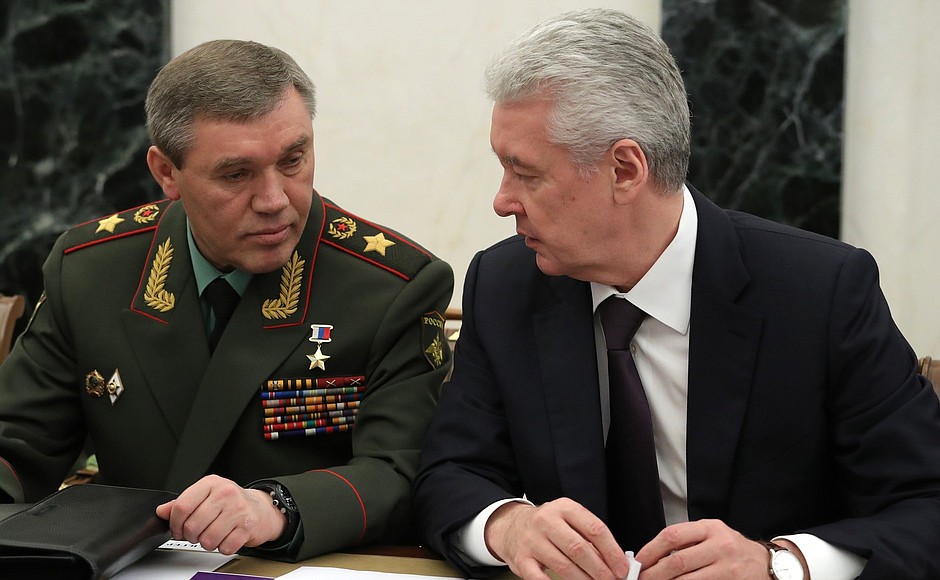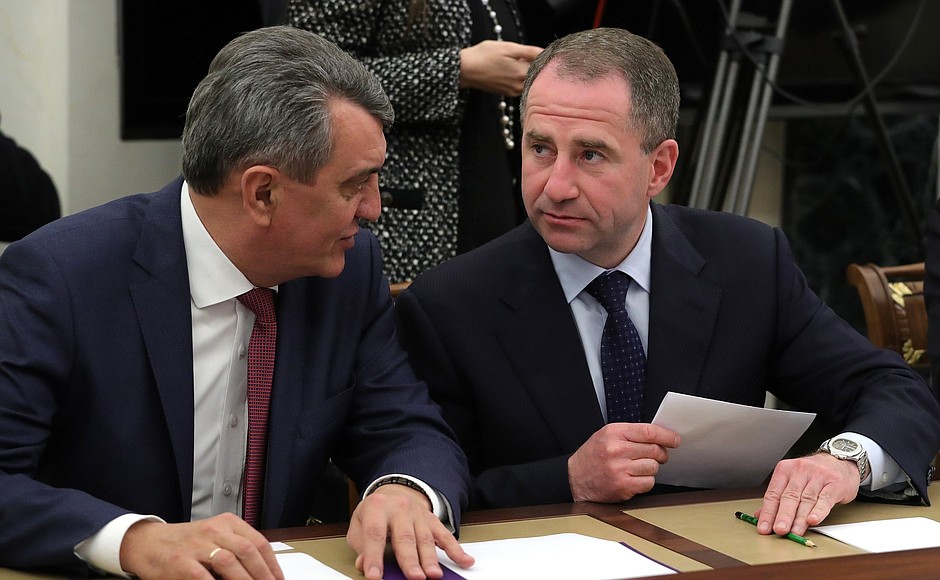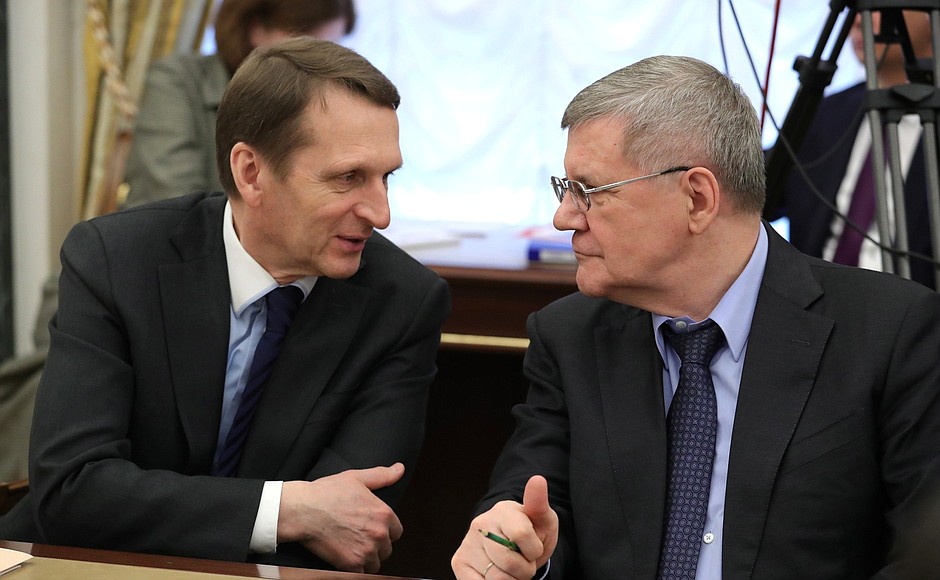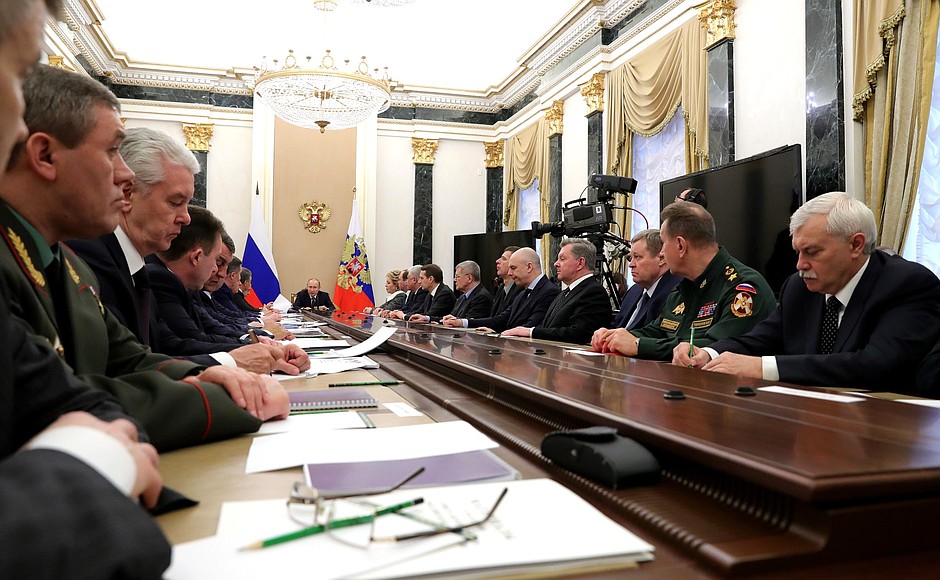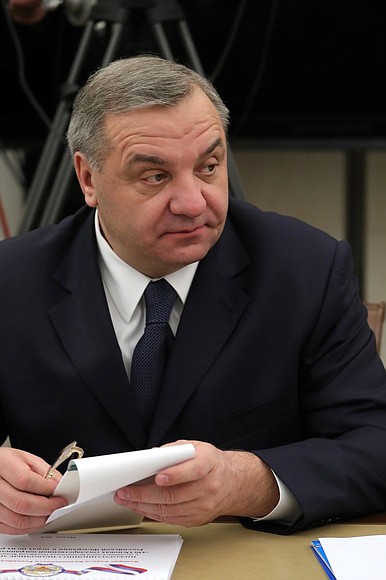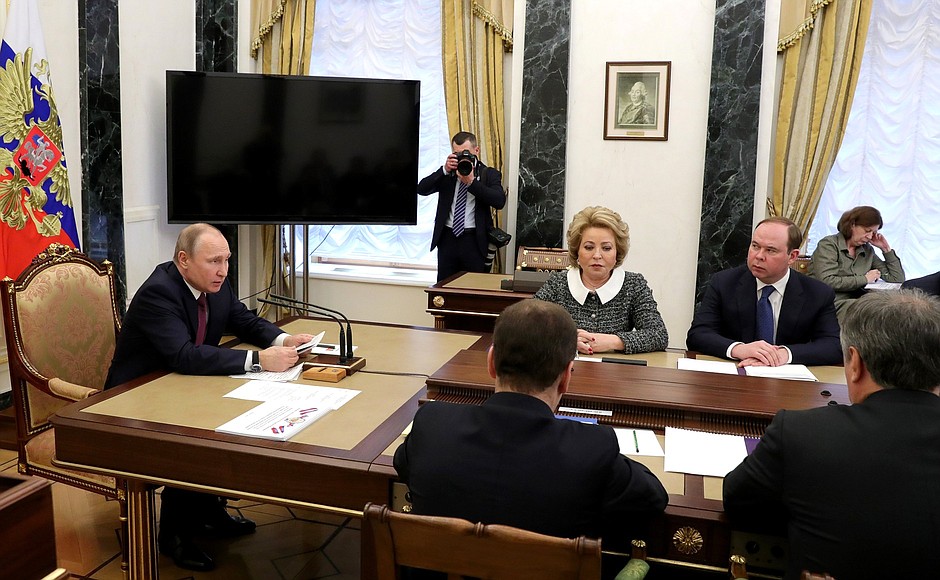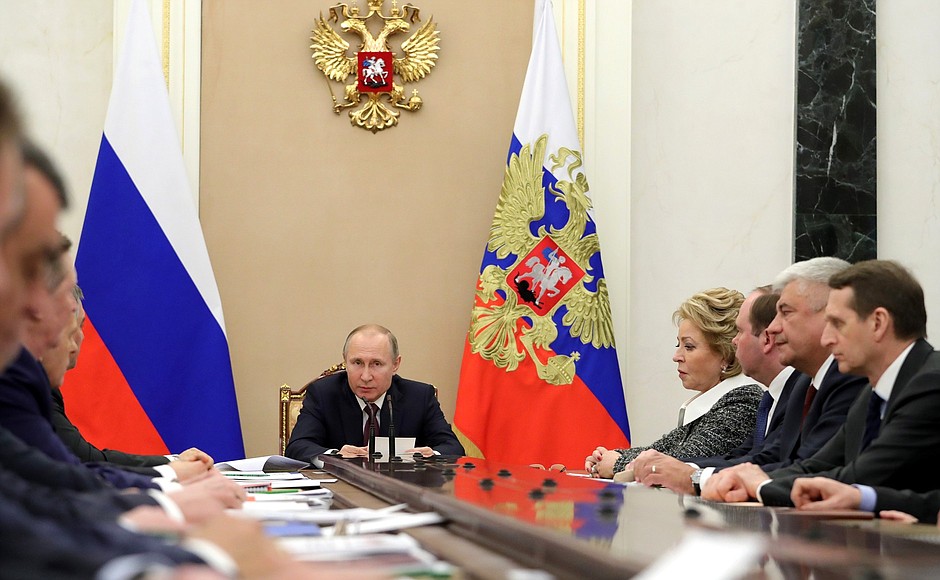President of Russia Vladimir Putin: Good afternoon, colleagues.
Today, we will review the draft Basic Principles of the State Border Policy of Russia. We will discuss a wide range of current and long-term goals outlined in this strategic planning document.
These issues are exceptionally important. The border remains the most important statehood attribute and the advanced frontier for ensuring the country’s security. Therefore, our actions and plans in this sphere must be well considered and effective, meet modern and future challenges, and be consistent with the national development goals.
The current Basic Principles of the Border Policy were adopted in 1996 and are clearly in need of a major update given the changes around the world and Russia’s greatly improved capabilities, as well as the great amount of work that has already been done.
Thus, the necessary regulatory framework in the border protection sphere has formed over the past years. The international legal registration of the border with neighbouring countries and the delimitation of maritime areas were carried out on the principles of mutual respect.
Since the 2000s, a number of complex border areas have been technically re-equipped and modernised, primarily in the Caucasus region and the strategically important regions of the Arctic and the Russian Far East.
The streamlining of the structure and the composition of federal executive bodies involved in implementing the border policy and border authorities was an important step. In this regard, I would like to note that the level of equipment of the border units with weapons and equipment has been brought to 80 percent, and the share of modern equipment has grown from 10 percent in 2003 – as little as 10 percent of modern technology – to 54 percent in 2017.
Overall, these measures have helped us stabilise the situation in the border regions, reduce the risk of terrorists and extremists entering the country and enhance the efficiency of combating cross-border crime.
On the other hand, the situation is changing rapidly and continuously, as I have said, so that new challenges and threats appear in the border regions and other areas.
In particular, NATO is increasing its military capability on our border, and attempts are being made to hinder integration processes that involve Russia and to provoke new and fuel old conflicts in the post-Soviet space and in the regions that border with Russia. The consequences of this include military and political instability, growing smuggling and crime rates, as well as acute humanitarian problems. In this situation, our priorities are to ensure reliable protection and defence of our borders and to effectively neutralise potential threats.
At the same time, we must continue to enhance the country’s openness. We keep saying that the Russian borders must be safely protected and yet as transparent as possible for all those who enter the country legitimately and with good intentions. I see this as a vital element of Russia’s international image and the quality of our business climate and national jurisdiction, as well as a major factor of economic, humanitarian and cross-border cooperation and the development of integration in Eurasia.
All these approaches have been incorporated in the draft Guidelines of the National Border Policy, which we will be discussing today.
What areas do I consider the most important? First if all, it is necessary to use a comprehensive approach when mitigating risk and threats to border security.
It is necessary to reliably protect our territory from terrorists and extremists, transnational and trans-border crime and to curtail channels of drug trafficking, illegal migration and the smuggling of items of cultural value, strategic raw materials and biological resources.
Obviously, the results of these efforts directly depend on clear-cut and effective coordination and the concerted efforts of all agencies and services that work directly at the border and are responsible for the security of our state and citizens in general. The heads of all the services are represented here today.
Secondly, it is necessary to consistently develop bilateral and multilateral border cooperation, relying on the experience that has been accumulated in this area in the last few years.
In the process, it is important to develop well-orchestrated and clear methods of cooperation between the border agencies and suggest new forms of partnership, primarily with our colleagues from the CSTO, the SCO and the Eurasian Economic Union. Let me emphasise that this cooperation must be as broad as possible – from the mutual exchange of information to the holding of joint operations, and in perspective, the formation of an integral system of border security and stability on the external borders of the associations of our countries. In the process, it is necessary to gradually remove excessive barriers on the internal borders within our integration associations. Needless to say, this should be done carefully, not to the detriment of the interests of our country, our business and the security of the citizens of the Russian Federation.
Thirdly, one of the key tasks is consistent development of Russia’s border infrastructure – naturally, based on a new, advanced technical format with the use of modern technology and best practices, including automated control and monitoring of the situation, equipment and procedures for the operation of border checkpoints.
Cutting-edge equipment, communication and digital technology, as well as the agencies’ integrated databases must be used to create comfortable conditions for our citizens and for Russian and international business, to promote inbound trade and tourism, as well as to enhance the competitiveness of national exports and transit routes.
One of our priorities is the development and implementation of an integrated one-window/one-stop border crossing system for goods and vehicles. These specific and practical measures must help us implement one of the tasks set out in the Presidential Address, that is, to accelerate the movement of cargo within Russia and to enhance Russia’s position as a global logistics hub.
I must point out, however, that the speed of construction and renovation of border checkpoints is unacceptably low. Finished facilities remain idle for a long time, and the installation of automated systems and other modern technology takes too long or is delayed. At the same time, the prosecutor’s offices say that budgetary allocations are not always used efficiently.
I ask you to analyse the implementation of the State Border of the Russian Federation 2012–2021 federal targeted programme. We must pinpoint the problems that are hindering this and take measures to resolve them. Overall, the programme should be adjusted to the Guidelines of the National Border Policy, which we are discussing today.
And finally, we must continue working on an international legal framework for the state border and maritime delimitation, including the external border of Russia’s continental shelf. We must act consistently and rely on solid arguments to protect our national interests, especially since we have accumulated considerable experience in this area. I am referring to the international recognition in 2014 of Russia’s right to the part of the Sea of Okhotsk that had been previously open to other countries.
Let us proceed to our discussion.
<…>
